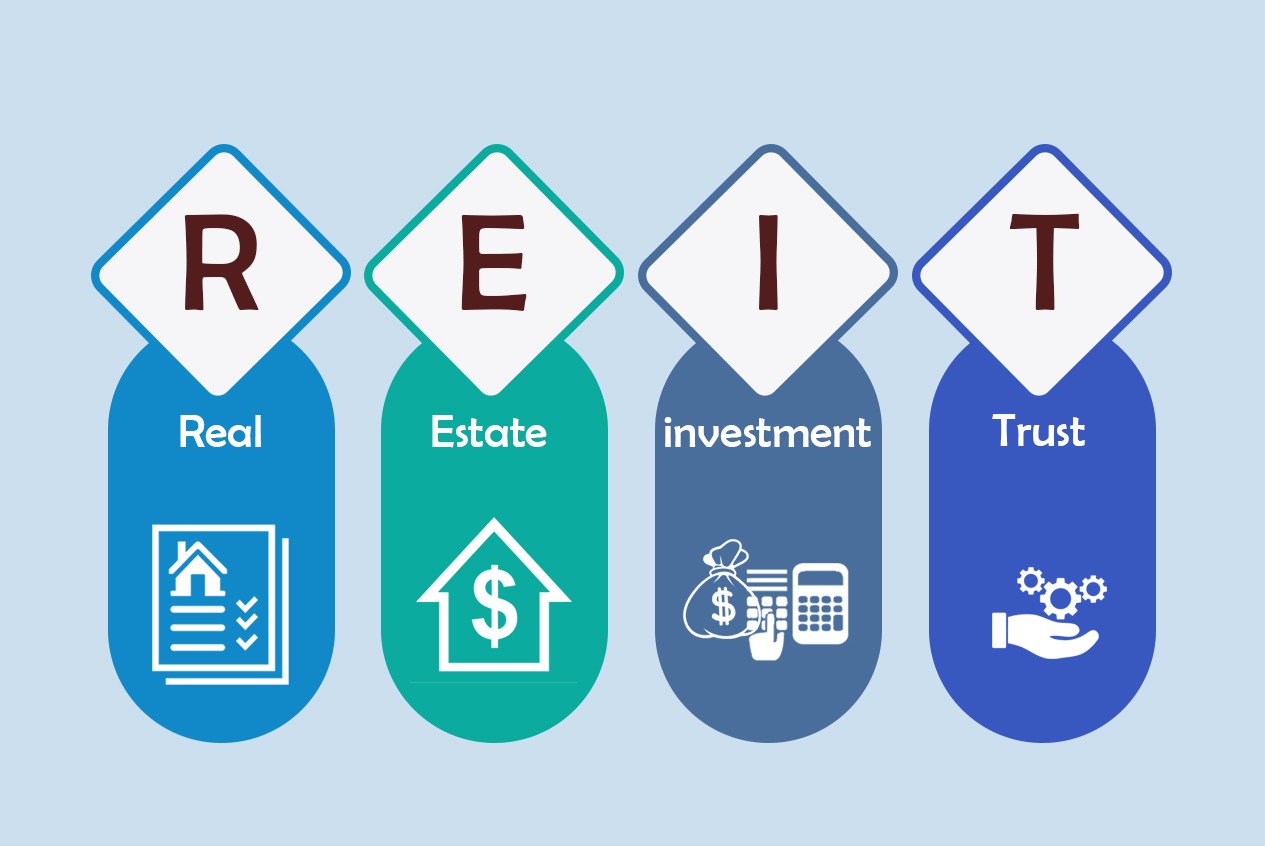
Enter REITs — Real Estate Investment Trusts — one of the most accessible and beginner-friendly ways to get started in real estate investing.
In this article, we’ll explore:
- What REITs are
- How they generate passive income
- The types of REITs available
- How to start investing (even with $100 or less)
- Pros, cons, and key tips for success
What Is a REIT?
A Real Estate Investment Trust (REIT) is a company that owns, operates, or finances income-generating real estate. These properties may include:
- Apartment buildings
- Shopping malls
- Office spaces
- Hospitals and nursing facilities
- Warehouses and data centers
- Hotels and resorts
- Infrastructure projects (cell towers, pipelines, etc.)
How REITs Generate Passive Income
When you invest in a REIT, you are essentially buying shares in a company that owns real estate. The income generated from rent, property sales, or mortgage interest is collected by the REIT and then paid out to shareholders in the form of dividends.
Here’s how the passive income works:
- The REIT collects revenue from its properties (rent, leases, financing interest, etc.).
- It deducts operating costs, taxes, and maintenance.
- It distributes the remaining profit — usually quarterly — to investors like you.
That means if you own 1% of the REIT shares, you’ll receive $180,000 in annual dividends. While most investors will start small, this model scales well as you grow your investment.
Types of REITs You Can Invest In
There are several types of REITs, each with different levels of risk and reward. Here’s a breakdown:
1. Equity REITs (Most common)
- Own and manage income-producing properties
- Generate revenue primarily from rents
- Offer regular dividend payouts
2. Mortgage REITs (mREITs)
- Invest in real estate debt (mortgages and loans)
- Earn income from interest payments
- Tend to have higher yields but also higher risk
3. Hybrid REITs
- Combine equity and mortgage strategies
- Provide both rental and interest income
- Listed on major stock exchanges (NYSE, NASDAQ)
- Easily bought and sold like stocks
- Not listed on exchanges
- Less liquid but sometimes offer higher returns
Why REITs Are Great for Passive Income
✅ Consistent Cash Flow: REITs are structured to pay out dividends regularly — often every quarter — providing steady passive income.
✅ Low Barrier to Entry: You can start investing with as little as $100 on platforms like Fundrise, Public.com, or Fidelity.
✅ Diversification: Gain exposure to real estate without owning physical property. Your money is spread across multiple assets instead of being tied up in one building.
✅ No Landlord Headaches: No tenants, toilets, or maintenance calls. The REIT handles property management for you.
✅ Liquid Investments: If you invest in publicly traded REITs, you can sell your shares easily like you would with stocks.
✅ Tax Advantages: REIT dividends can qualify for deductions under the 20% pass-through income rule (consult a tax advisor for your situation).
How to Start Investing in REITs: Step-by-Step
Step 1: Set Your Investment Goal
Decide whether your focus is:
- Regular passive income (look for high-dividend REITs)
- Long-term growth (choose REITs with rising share prices)
- Balanced returns (hybrid REITs)
You can invest in REITs through:
- Stock brokers like Vanguard, Charles Schwab, Fidelity
- Investment apps like Public.com, Robinhood, M1 Finance
- Real estate platforms like Fundrise, DiversyFund, or Streitwise
Use filters like:
- Dividend yield (look for 4%–10% for income)
- Historical performance
- Sector (residential, commercial, data centers, etc.)
- Management team quality
- Realty Income (O): Monthly dividend payments
- American Tower (AMT): Cell tower REIT
- Prologis (PLD): Warehouses and industrial real estate
- Simon Property Group (SPG): Malls and retail centers
Start with as little as $100, then dollar-cost average (invest small amounts regularly) to build your position over time.
Step 5: Reinvest Your Dividends
Many REITs offer DRIPs (Dividend Reinvestment Plans) that automatically buy more shares for you with each payout — growing your passive income over time.
REIT Investment Example
Let’s say you invest $5,000 in a REIT with an average annual dividend yield of 6%. Here’s what your passive income could look like:
- Year 1: $300 in dividends
- Year 5 (with reinvested dividends): ~$1,725 in total passive income
- Year 10 (compounded): ~$4,250+
Pros and Cons of Investing in REITs
| Pros | Cons |
|---|---|
| Passive income from real estate | Dividends are taxed as ordinary income |
| Low capital required to get started | Some REITs are volatile in downturns |
| No property management required | Not all REITs outperform the market |
| Easy to buy/sell like stocks | Dividend payments can vary |
| Diversifies your investment portfolio | Less control over individual properties |
Common Questions About REITs
✅ Can I lose money in REITs?
Yes. Like all investments, REITs come with risks. Share prices can drop, and dividends aren’t guaranteed. However, diversifying across multiple REITs and sectors can reduce your exposure.
✅ Are REITs better than rental property?
That depends on your goals. REITs are more passive and liquid, while rental properties offer more control, tax benefits, and potential leverage.
✅ Are REITs good for beginners?
Absolutely. They're a low-risk entry point into real estate, ideal for new investors who want passive income without the stress of being a landlord.
Final Thoughts: REITs = Real Estate for Everyone
You don’t need to own property to build wealth through real estate. REITs are a smart, simple, and scalable way to earn passive income, diversify your investments, and start benefiting from the real estate market — no tenants or mortgages required.
Whether you're investing $100 or $10,000, REITs offer an accessible path to financial freedom through real estate.
So if you’ve been wondering how to invest in real estate without buying property, REITs might just be your best first step.

